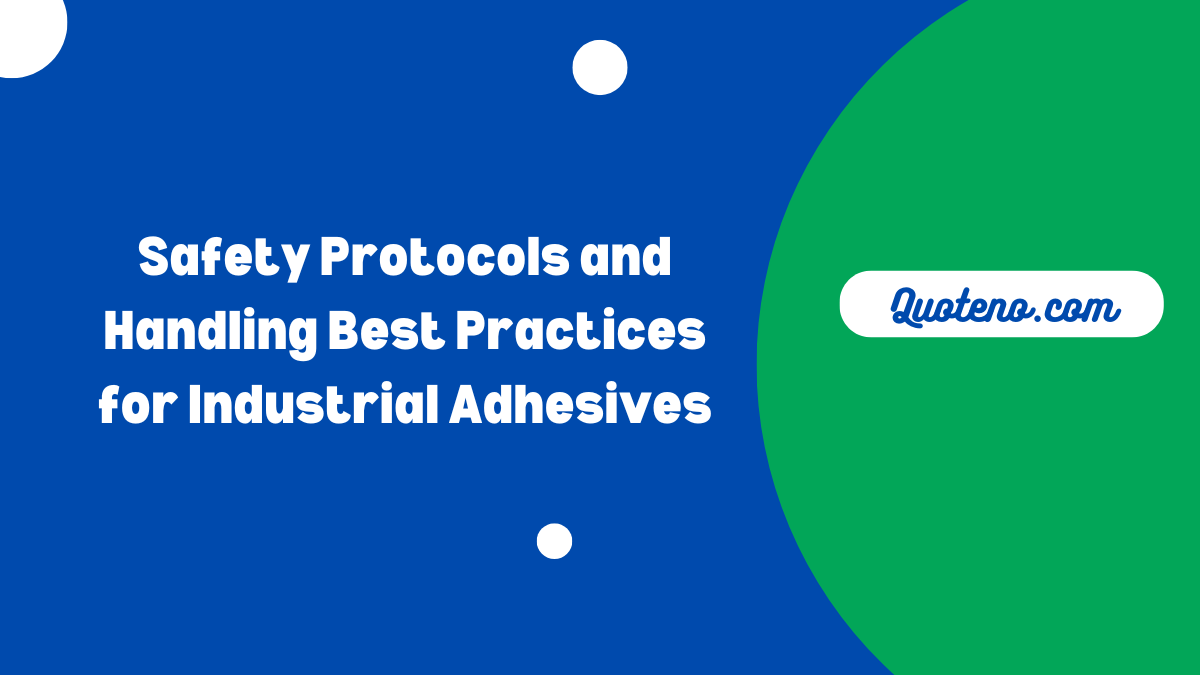Industrial adhesives are crucial in modern manufacturing, providing reliable bonding for countless applications. While effective, these substances contain chemicals that pose significant risks, such as skin irritation, respiratory distress, and, in severe cases, chemical burns. Mitigating these hazards begins with understanding how these adhesives interact with the human body and the environment. Sourcing the right packaging supplies is a foundational step for professionals looking to ensure safer handling routines. The risks associated with exposure can vary based on the type of adhesive, how it is applied, and the workplace conditions. Some adhesives release toxic fumes or volatile organic compounds (VOCs), requiring careful consideration of both immediate and long-term health effects. Recognizing these potential dangers empowers businesses to proactively adopt safety measures that align with the latest industry standards.
Table of Contents
Key Takeaways
- Industrial adhesives require careful handling to prevent health and safety hazards.
- Proper use of PPE, ventilation, and handling protocols dramatically reduces accident risks.
- Comprehensive storage, emergency response plans, and continuous training are vital for workplace safety.
Essential Personal Protective Equipment (PPE)
Selecting and correctly using the right personal protective equipment (PPE) is central to creating a safe work environment. Essential gear includes:
- Gloves: Use chemical-resistant gloves to avoid direct skin contact and potentially absorb hazardous substances.
- Eye Protection: Safety goggles or face shields are critical in preventing accidental splashes or spray from adhesives.
- Respirators: Suitable masks protect workers from inhaling VOCs, especially in confined or inadequately ventilated spaces.
- Protective Clothing: Long-sleeved clothing and pants reduce the exposed skin area, lowering the risk of accidental contact.
Organizations like the Centers for Disease Control and Prevention (CDC) offer comprehensive guidelines on chemical PPE, emphasizing regular inspections and maintenance to ensure PPE efficacy.
Maintaining Proper Ventilation
Many industrial adhesives release toxic fumes that can accumulate, especially in enclosed spaces. Employing robust ventilation measures is crucial:
- Ensure Adequate Airflow: Use fans, windows, or specialized exhaust systems to disperse adhesive vapors and continually refresh the air.
- Monitor Air Quality: Install air monitoring systems to routinely check for elevated VOC or particulate levels, addressing hazardous buildups before they become serious threats.
Recent research on workplace air quality underscores the value of vigilant monitoring and ventilation systems in industrial settings.
Safe Handling and Application Techniques
Proper handling prevents exposure and workplace incidents. Always review the Safety Data Sheets (SDS) accompanying each adhesive for up-to-date information on hazards and best practices:
- Read Safety Data Sheets (SDS): Product-specific SDS documents describe relevant risks, emergency procedures, and handling instructions.
- Use Appropriate Tools: Specialized applicators, guns, or dispensers limit direct contact and ensure consistent adhesive application.
- Avoid Mixing Chemicals: Never mix different adhesives or chemicals without consulting their respective SDS, as unexpected reactions may occur.
These steps foster a safe manufacturing environment and support consistent, high-quality results.
Proper Storage Practices
Storing industrial adhesives correctly preserves their chemical integrity and prevents dangerous accidents, such as leaks or spontaneous reactions. Best practices include:
- Temperature Control: Store adhesives in a cool, dry location, away from direct sunlight and ignition sources.
- Sealed Containers: Always keep containers tightly sealed when not in use to prevent evaporation and contamination.
- Clear Labeling: Each container should contain product names, expiration dates, and key safety notes.
Regularly auditing storage facilities helps identify deteriorating containers or outdated products early.
Emergency Response and First Aid
Despite strict preventive measures, accidents do occur. Organizations must be prepared to manage spills, exposures, or other emergencies:
- Spill Management: Keep readily accessible kits with absorbents such as sand or vermiculite to swiftly contain and manage spills.
- First Aid Measures: If contact occurs, rinse the skin thoroughly; for eye exposure, use an eyewash station and rinse for at least 15 minutes.
- Medical Attention: Escalate to professional medical care for severe exposures, inhalation, or injuries.
Frequent drills and clear signage can ensure rapid, effective responses during critical incidents, reducing the risk of serious harm.
Regular Training and Safety Audits
Safety standards are an ongoing commitment. Consistent training and routine audits lead to a safer workplace and help catch issues before they escalate:
- Employee Training: Schedule frequent training sessions on handling, PPE use, and emergency response, as well as updating materials as adhesives and regulations evolve.
- Safety Audits: Conduct thorough, scheduled audits to monitor compliance with safety protocols and identify areas for improvement.
Building a safety-first culture requires leadership to support compliance, proactive engagement, and open reporting of hazards.
Final Thoughts
Industrial adhesives offer unmatched performance benefits but require a strong safety culture to mitigate associated risks. By prioritizing PPE, ventilation, careful handling, and comprehensive emergency planning, organizations can both protect their workforce and improve operational reliability. Ongoing education and regular audits will ensure these standards remain effective, fostering safety and productivity in every adhesive-related process.
- Divorce Annulments Demystified: Facts, Misconceptions, and What to Know - December 8, 2025
- Setting Healthy Boundaries for Better Mental Wellness - November 20, 2025
- Creative Ways to Make Camping Trips Fun for Everyone - November 7, 2025

